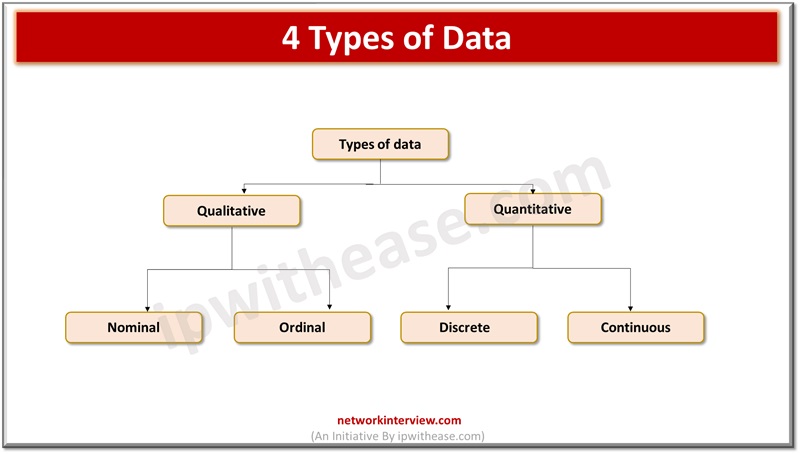
4 Types of Data: Nominal, Ordinal, Discrete, Continuous
As the world is advancing and relying on businesses, users are shifting towards availability of data to make quick and efficient decisions. Data is new ‘fuel’ for the world today. Everywhere and in every field be it medicine, logistics, manufacturing, IT. Raw and structured data exists, it is analysed, derived in a meaningful manner which is useful for the purposes it is being used for. It becomes important to handle and store data in the proper way and process in an effective manner.
Today we look more in detail about types of data available, their characterizes, purpose it is used for.
About Data Categories
Businesses run on data and most organizations use data to get insights into creating and launching new campaigns, design strategies, products, and services. According to a recent report every day at least 2.5 quintillion bytes of data is produced. Qualitative and Quantitative are two types of data, which is further classified as depicted in below figure.
Types of Data
Qualitative/Categorical Data
This kind of data is not measurable or counted in the form of numbers. This data is sorted by category and consists of audio, video, images, symbols, or text. Some examples of qualitative data are gender – male, female, language we speak, favourite holiday destination, opinions, color etc. It depicts people’s perception and helps market researchers to establish consumer behaviour patterns and design their ideas and strategies around that.
Nominal Data
It is used for labelling variables without any specific order such as color of hair is an example of discrete data which is not comparable to another color. With nominal data we can’t do any numerical tasks or give order to any sort of data. This data is not in any meaningful order and their values are distributed discreetly in distinct categories. Some examples of nominal data are color of hair , marital status, nationality, gender, eye color etc.
Ordinal Data
It has natural ordering having numbers present in some kind of order by position on scale. This kind of data is used for customer observations such as customer satisfaction, happiness etc but no arithmetic function can be performed on that. Some examples of ordinal data are feedback , experience, or satisfaction on a scale of 0 to 10, letter grades in an exam, people ranking in competition, economic status, education level etc.
Quantitative Data
Quantitative data expression is in numbers which makes it accountable and includes statistical data analysis. This kind of data answers questions like how much, how many. For example, price of a phone, height or weight of a person, age etc. this data is useful for statistical manipulation and can be represented in wide ways such as bar charts, pie, histograms etc. Some examples of this kind of data are height and weight of a person, room temperature, marks, time etc.
Discrete Data
It means distinct or separate. This kind of data contains values which fall under whole numbers or integers. The total students in a class are examples of discrete data which cant be broken down into decimal or fractional values. It is countable and has finite value. Some examples of discrete data are students in a class, price of mobile phone, employee headcount, players in a game, days in a week.
Continuous Data
Continuous data can be in the form of fractional numbers. It can be a version of an android phone, height or weight of a person, length of an object etc. continuous data can be further divided into small parts. Some examples of continuous data are height and weight of a person, speed of vehicle, time spent on finishing a task, wi-fi frequency, share price etc.
Continue Reading:
What is a Data Management Platform (DMP)? CDP vs DMP?
What Is Data Masking? Types & 8 Techniques



